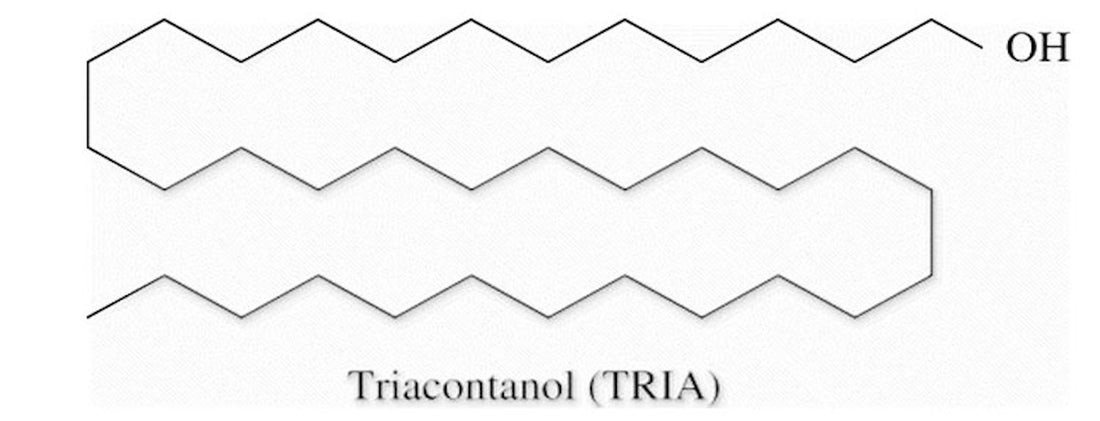Triacontanol is an ultra-long-chain primary fatty alcohol (30:0) that is Triacontane in which one of the terminal methyl hydrogens is replaced by a hydroxy group.
Common name: Triacontanol
Chemical formula: C30H62O
Chemical Names: 1-Triacontanol, Triacontan-1-ol, 593-50-0, Melissyl alcohol
Molecular weight: 438.8g/mol
Exact Mass: 438.480067 g/mol
Complexity: 288
Melting Point: 88.0c/190.4f
Triacontanol is found in plant cuticle waxes, beeswax and Alfalfa.
Triacontanol is a growth stimulant for many plants.
Researchers have reported that in various crops Triacontanol mediates improvements in:
- Growth/Vigour
- Yield and bloom size
- Photosynthesis
- Protein Synthesis (unlocks amino acids)
- Increased uptake of water and nutrition
- Increased Nitrogen fixation
- Increased enzyme action
Triacontanol works extremely fast if the dosage is correct.
In one study Triacontanol elicited the appearance of L(+)-adenosine within 1 minute in the roots of plants, the axial growth/shoots were sprayed with a nanomolar concentration of Triacontanol. Visibly notable differences are found in flowering/fruiting crops which show a dramatic increase in essential oil production and crop weight.
Studies performed on tomatoes returned very favorable results, that in turn quantify its use as a staple hormone in agriculture.
Does Triacontanol benefit all plants?
There is strong evidence that application of Triacontanol to the rootzone or leaves enhanced growth and yield of vegetables and other crops, including agronomic and horticultural crops as well as medicinal and aromatic crop plants under normal and adverse conditions. Interestingly, Triacontanol is very effective in all C3 plants.
What are C3 Plants?
C3 plants are plants in which the initial product of the assimilation of carbon dioxide via photosynthesis is 3-phosphoglycertae, which contains 3 carbon atoms.

Is Triacontanol safe?
Yes, Triacontanol is non-toxic to all plants, animals and humans, and is safe to use on all consumable crops.
Triacontanol is added to many bloom boosters that are on the market currently. These products work really well but can be quite expensive for some gardeners, if you choose to acquire your own Triacontanol this will be much cheaper just ensure to take all the necessary precautions when preparing your own stock solutions.
References:
Triacontan-1-ol
http://www.ebi.ac.uk/chebi/searchId.do?chebiId=CHEBI:28409
Lipid Classification
1-Triacontanol
http://www.nist.gov/srd/nist1a.cfm
1-triacontanol
https://en.wikipedia.org/wiki/Triacontanol
PubChem
https://pubchem.ncbi.nlm.nih.gov







